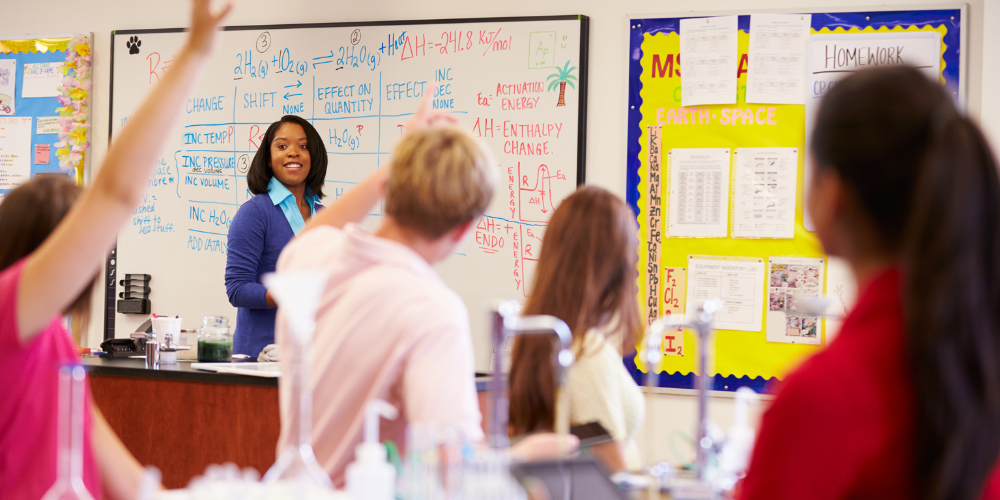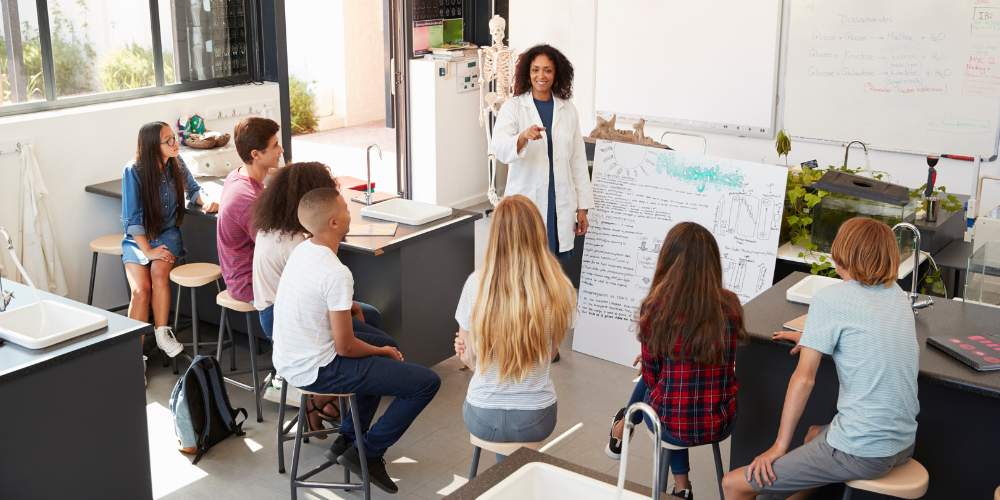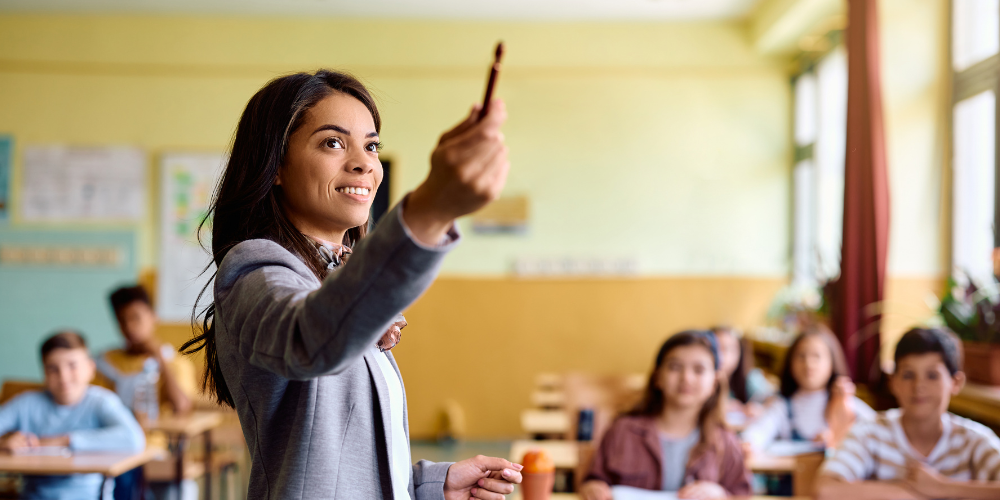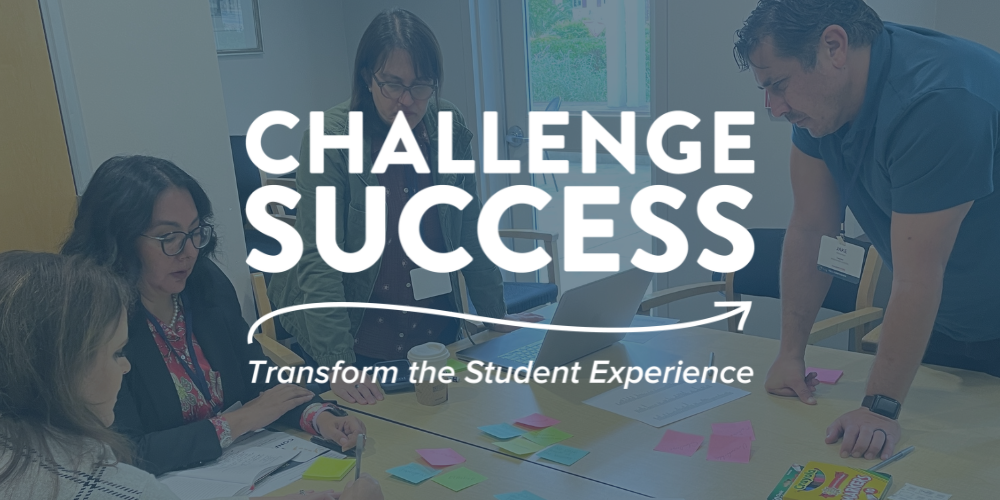
By The Challenge Success Team
The data is clear: Most students are not fully engaged in their learning.
According to our 2024 Challenge Success Student Voice Report, only 13% of students report being fully engaged in school. A similar percentage of students report disengagement, while 45% of students report simply “doing school,” meaning they are going through the motions and getting their work done, but not finding schoolwork valuable or enjoyable.
At Challenge Success, we partner with schools across the country to use evidence-based strategies and collaborative co-design processes to improve student well-being, belonging, and engagement in learning. Our research also shows that when teachers promote learning and mastery over grades and test scores, student engagement and motivation increases.
Read on for strategies and examples from schools that have successfully increased student engagement in school through changing their pedagogy!
Utilizing the S.P.A.C.E. Framework in Schools

We have organized our research-based, equity-centered strategies into a framework we call S.P.A.C.E. This framework embodies our vision to co-create educational systems that value each student for their unique identities, assets, and definitions of success and effectively prepare them for the variety of opportunities and challenges they will encounter in school and beyond. Many of these strategies emerged from our partner schools communities, while others stem from research on effective education.
Designing With Schools, Not For Them
Within the five S.P.A.C.E. categories, we strive to curate policies and practices that reinforce our equity commitments. We acknowledge that these practices are not an exhaustive list and are not intended to be prescriptive. When we work with schools, we employ a co-design approach that encourages each school to use the framework in a manner that is most responsive and authentic to the unique assets, needs, and values in their community.
In this blog post, we will focus on the second component: (P): Pedagogy That Engages.
(P): Pedagogy That Engages

The focus today on extrinsic measures of success, such as GPAs, college acceptances, and ultimately financial status, can dampen students’ intrinsic motivation and engagement with learning. It can lead to a system that prioritizes high grades above all else, including learning.
Our research has shown how students’ perceptions of classroom practices correlate with their engagement levels. We’ve developed concrete strategies teachers can use to increase student engagement by tweaking some approaches to grading and assessment.
5 Ways to Create Pedagogy That Engages

There is no one-size-fits-all solution for the “best” pedagogical practices for every teacher: In the Challenge Success School Partnership, we collaborate with schools to identify and implement community-specific strategies to improve well-being, belonging, and engagement.
For example, we worked with Dover-Sherborn High School in Massachusetts to create K-12 Deeper Learning Competencies for teachers to promote higher engagement and deeper learning in the classrooms. Other examples of ways schools have increased engagement include adding “Plus” days that provide opportunities for targeted instruction and incorporating focused insight or capstone classes intended to teach key success skills students will need to be successful in school and life.
Here are five more research-backed ways you may be able to improve student engagement through pedagogy:
- Diversify teaching strategies to include more student-centered practices such as learning routines, project- or problem-based learning, or other inquiry based activities as part of each unit.
- Ensure curriculum and assignments are culturally responsive and sustaining by incorporating content and using approaches that build on student assets and address complex questions that are important to the community.
- Develop assignments that allow for more student choice and personalization.
- Connect and build curriculum around students’ identities, backgrounds, and experiences.
- Create opportunities for students to exercise shared-decision making, strengthen relational agency, resolve conflict, and collaborate on authentic and relevant topics.
Ready for Action?
Learn how to collaboratively improve engagement outcomes in your school using the SPACE framework!

The Challenge Success School Partnership is an inclusive, community-driven collaboration that leverages the Challenge Success Change Process to transform the student experience within your school. Our program is a research-backed way to prioritize student well-being while also deepening engagement with learning and enhancing belonging.
Together, we will center the student experience, gather and interpret community-voice data, design research-based, equitable policy and practice changes, and create community-specific outcomes for all students. Learn more about how we can collaborate with your school community this year!
This blog post was adapted from our article in Kappan, “Helping students to learn and grow.”
Related: Bring our “Pedagogy That Engages” professional development workshop to your school!
Challenge Success, a nonprofit affiliated with the Stanford Graduate School of Education – elevates student voice and implements research-based, equity-centered strategies to increase well-being, engagement, and belonging in K-12 schools.